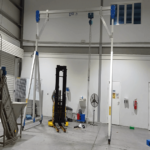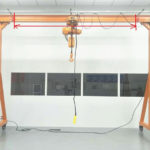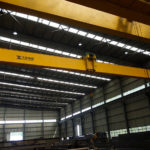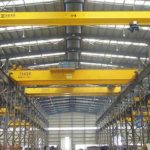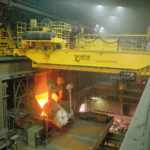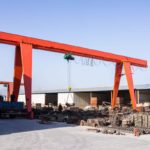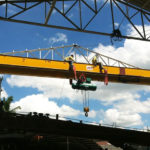Electrolytic aluminum production is a complex process that relies on specialized equipment to function efficiently. A critical component in this process is the multifunction crane for electrolytic aluminum, also known as an overhead crane. These cranes are the heavy lifters of the aluminum industry, tackling demanding tasks within the harsh environment of an aluminum smelter.
In electrolytic aluminum production, overhead cranes play a critical role in various stages of the manufacturing process. From raw material handling and ingot transportation to furnace maintenance and product finishing, these cranes facilitate the movement of materials and equipment with precision and reliability. Whether lifting molten aluminum or transporting finished products, overhead cranes provide the speed, accuracy, and safety required to meet the demands of modern production environments.
Types of Electrolytic Aluminum Cranes
There are two main types of multifunction cranes used in electrolytic aluminum production:
- Double Girder Overhead Cranes: These are the most common type of electrolytic aluminum crane. They consist of two main beams that span the width of the building, supporting a hoist and trolley that can move along the beams. Double-girder cranes offer superior lifting capacity and stability, making them ideal for handling heavy loads like crucibles and anodes.
- Single Girder Overhead Cranes: single girder cranes are sometimes used for lighter-duty tasks within the aluminum smelter. They have a single main beam and a smaller lifting capacity compared to double-girder cranes.
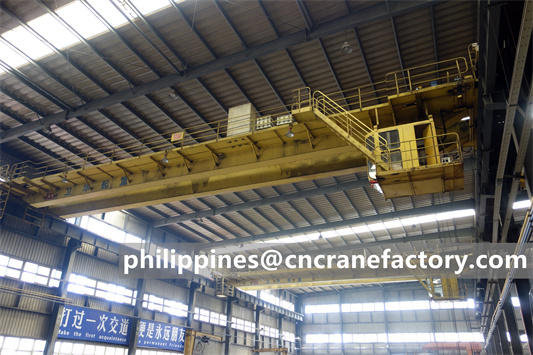
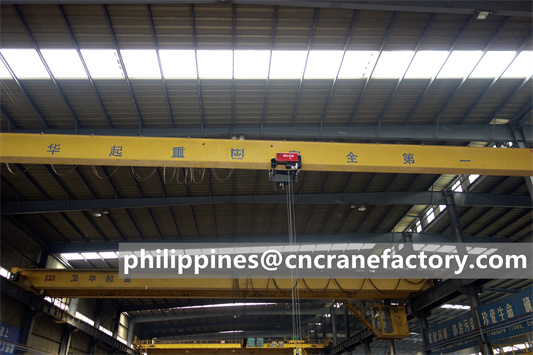
Both types of cranes can be further customized with various attachments to perform specific tasks within the aluminum production process. Here are some common examples:
- Feeding Mechanism: This attachment allows the crane to precisely add alumina powder and covering material to the electrolytic cells.
- Slagging Mechanism: Used to remove slag, a waste product that accumulates on the surface of molten aluminum.
- Anode Replacement Mechanism: Facilitates the removal of spent anodes and the installation of new ones.
- Shelling Mechanism: Breaks open the hardened electrolyte crust on top of the electrolytic cell.
- Aluminum Discharging Mechanism: Lifts and transports crucibles filled with molten aluminum.
Advantages of Electrolytic Aluminum Cranes
- Versatility: A single multifunction crane can handle a wide range of tasks, eliminating the need for multiple specialized cranes. This reduces equipment costs and simplifies maintenance procedures.
- Efficiency: The ability to perform various tasks with an electrolytic aluminum crane streamlines the aluminum production process, leading to increased efficiency and output.
- Safety: By reducing the need for personnel to perform dangerous tasks at height, multifunction cranes contribute to a safer working environment.
- Durability: Electrolytic aluminum cranes are built to withstand the harsh conditions of an aluminum smelter, including high temperatures, dust, and corrosive materials.
- Precision: Modern multifunction cranes are equipped with advanced control systems that ensure precise movement and positioning for delicate tasks.
How Are Multifunction Cranes Used in Electrolytic Aluminum Production?
The specific tasks performed by an electrolytic aluminum crane will vary depending on the design of the aluminum smelter and the production process. However, here’s a general overview of their role:
- Feeding: The electrolytic aluminum crane uses the feeding mechanism to carefully add alumina powder and covering material to the top of the electrolytic cells.
- Slagging: Periodically, an electrolytic aluminum crane removes slag from the surface of the molten aluminum using the slagging mechanism. This slag needs to be removed to maintain efficient aluminum production.
- Anode Replacement: As anodes are consumed in the electrolysis process, the electrolytic aluminum crane employs the anode replacement mechanism to remove spent anodes and install new ones.
- Shelling: The hardened electrolyte crust that forms on top of the cell needs to be broken periodically. The shelling mechanism on the crane facilitates this task.
- Aluminum Tapping: Once the aluminum production cycle is complete, the electrolytic aluminum crane lifts and transports crucibles filled with molten aluminum using the aluminum discharging mechanism.
Choosing the Right Electrolytic Aluminum Cranes for Your Needs
Selecting the right multifunction crane for your aluminum smelter requires careful consideration of several factors:
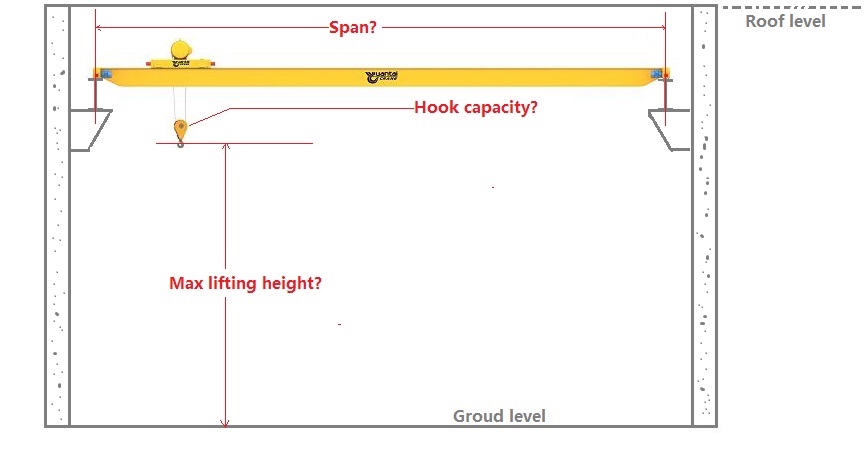
- Lifting Capacity: 10 tons to 500 tons (depending on the type and configuration). The crane’s lifting capacity should be sufficient to handle the heaviest loads encountered in your production process, such as crucibles filled with molten aluminum.
- Span: The span of the crane needs to match the width of your building to ensure full coverage of the electrolytic cells.
- Hoist Speed: Consider the required speed for different tasks. High speeds are beneficial for tasks like transporting crucibles, while slower, more precise movements might be needed for feeding or anode replacement.
- Duty Cycle: A4 (moderate duty) to A8 (heavy duty). The duty cycle refers to the percentage of time the crane will be actively lifting loads compared to idle time. Choosing a crane with a duty cycle that matches your production demands ensures optimal performance and longevity.
- Environmental Conditions: As mentioned earlier, aluminum smelters are harsh environments. The crane should be designed to withstand high temperatures, dust, and corrosive materials.
Additional Features of Electrolytic Aluminum Cranes
- Modern Control Systems: These systems provide precise control over the crane’s movement, ensuring safe and efficient operation. Features like variable speed control, anti-sway technology, and overload protection are common.
- Operator Cabins: Electrolytic Aluminum Cranes can be equipped with air-conditioned operator cabins that offer a comfortable and safe working environment for the operator.
- Remote Control Operation: Electrolytic aluminum cranes can be operated remotely for added safety, particularly during tasks involving high temperatures or hazardous materials.
Maintaining Your Electrolytic Aluminum Cranes
- Regular Inspections: Conduct regular inspections of the crane’s mechanical components, electrical systems, and safety features. This helps identify and address potential problems before they become major issues.
- Lubrication: Lubricate moving parts according to the manufacturer’s recommendations to minimize friction and wear.
- Cleaning: Regularly clean the crane to remove dust, debris, and corrosive materials that can accumulate and cause damage.
- Spare Parts: Maintain a stock of essential spare parts to minimize downtime in case of repairs.
- Operator Training: Ensure that crane operators are properly trained on safe operating procedures and emergency protocols.
Following a comprehensive maintenance program will extend the lifespan of your electrolytic aluminum cranes and contribute to a safe and productive aluminum production operation.
Come and Get a Free Inquiry
Our Yuantai Crane Company has been exporting overhead cranes, gantry cranes, jib cranes and electric hoists to the Philippines and other Southeast Asian countries as well as countries around the world for more than ten years. We have very rich experience and a green crane manufacturing industry chain. contact us to get free crane solutions and free quotations, and look forward to our friendly cooperation!
